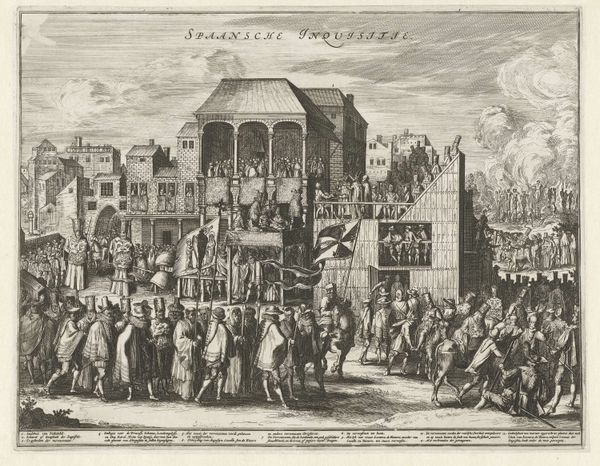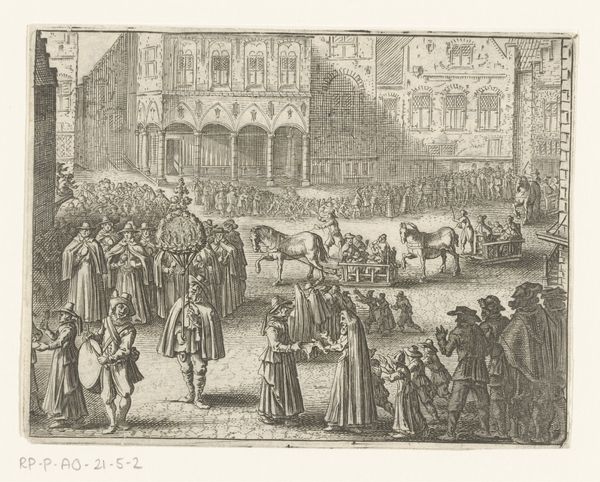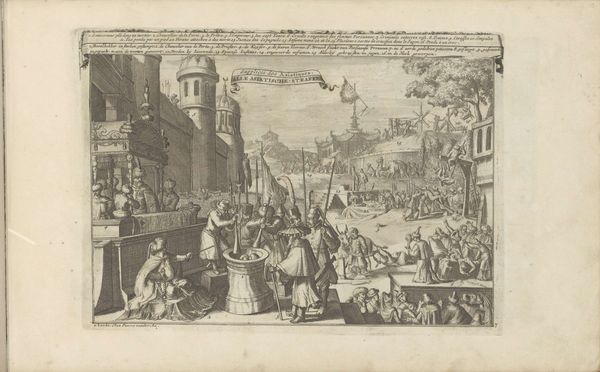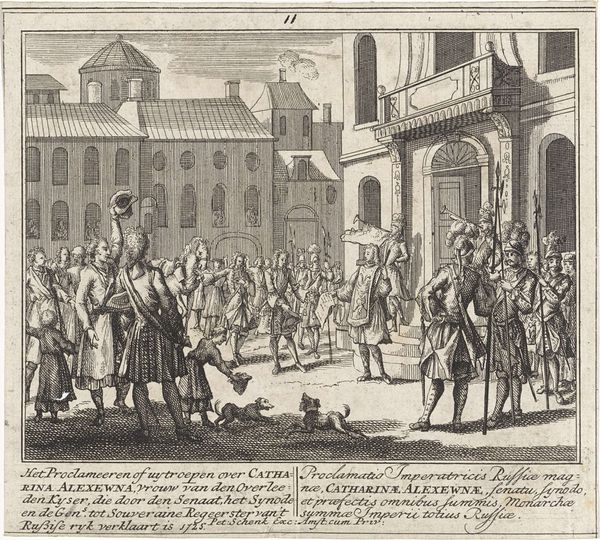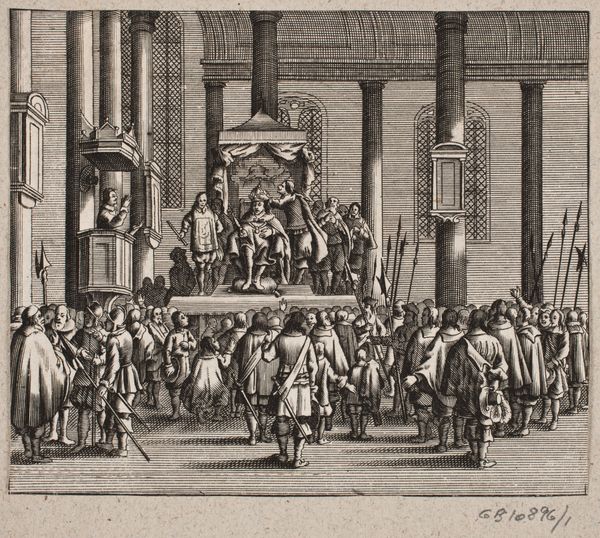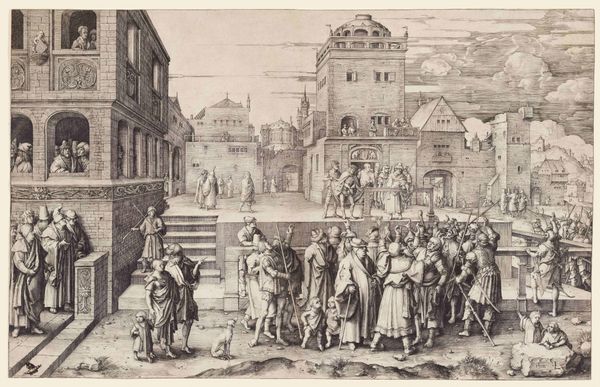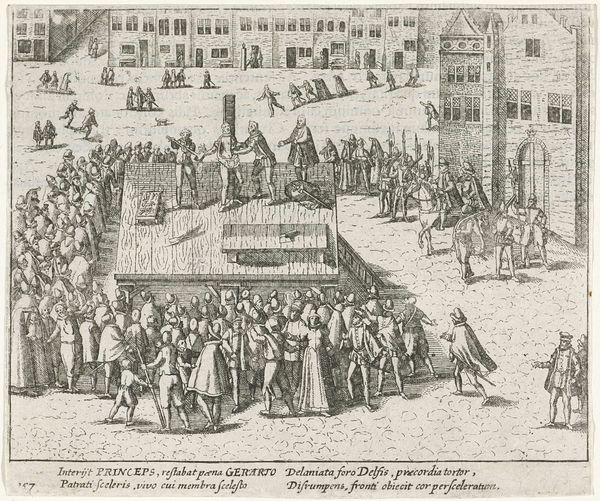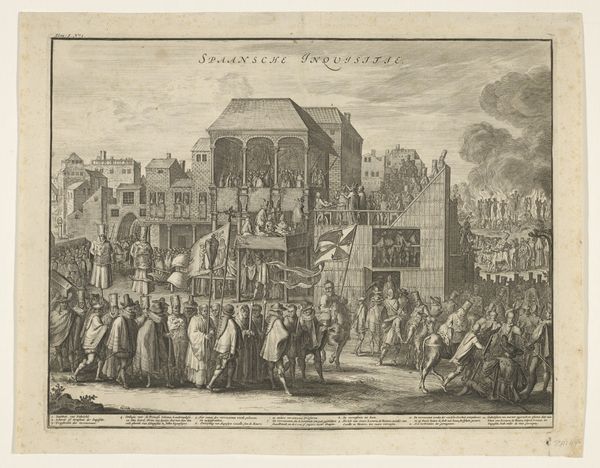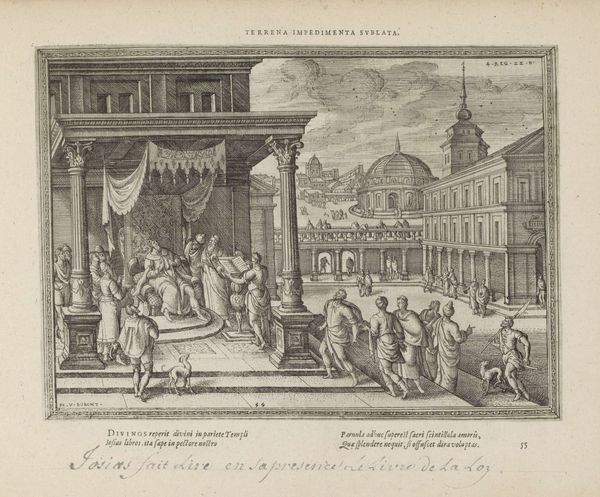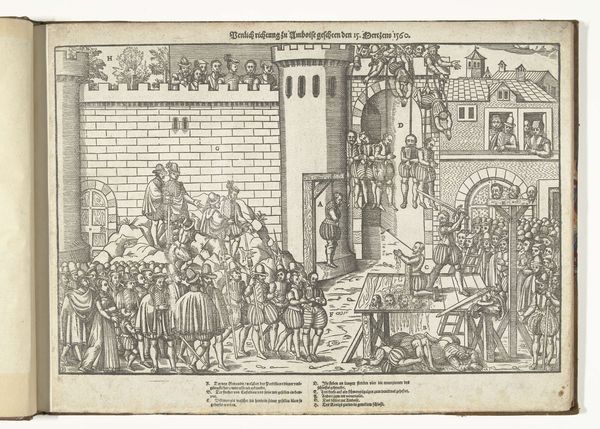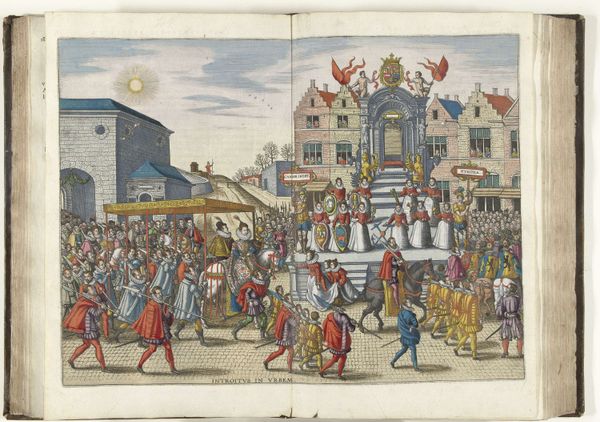
print, engraving
#
narrative-art
#
baroque
# print
#
figuration
#
cityscape
#
history-painting
#
engraving
Dimensions: height 235 mm, width 376 mm
Copyright: Rijks Museum: Open Domain
Editor: This is "Auto-da-fe in Valladolid, 1558," an engraving by Claes Jansz. Visscher, dating from 1596 to 1652, currently at the Rijksmuseum. It's quite a detailed scene, and honestly, a little disturbing given the subject matter. What do you see in this piece? Curator: This engraving depicts a public act of penance during the Spanish Inquisition. Understanding its historical context is crucial. These "auto-da-fé" were public spectacles of religious persecution, serving as a tool of social control. Notice the architecture—the balconies are filled with onlookers, likely elites sanctioning the event. How do you interpret the artist's choice to include such a diverse crowd? Editor: Well, maybe they're showing that this wasn't some fringe event, but a major spectacle supported by different layers of society. Was Visscher critical of the Inquisition, do you think? Curator: It’s possible. The meticulous detail could be interpreted as a form of documentation, a way of holding power accountable, even centuries later. But it is also true that such representations risk perpetuating the violence, and normalising it. Look closely at those being punished. How are they visually presented versus the authorities? Editor: There’s definitely a power dynamic in the figures and composition. Those in power look very calm, almost like they’re spectators at a theatre. The accused are much smaller, and look scared. It definitely reinforces the violence inherent in this spectacle. Curator: Exactly. And we must consider how these images functioned within the broader context of religious and political conflict. They are not neutral documents, but products of a specific historical moment, which themselves served as propaganda. Remembering this type of symbolic expression remains a pertinent element when discussing themes of political and cultural relevance. Editor: That makes me rethink my initial reading, understanding the art as part of a complex system of power rather than as just a detached observation. Curator: Precisely, viewing the image in light of contemporary discussions regarding political structures enriches the critical framework around the work, inviting deeper discussions around it.
Comments
No comments
Be the first to comment and join the conversation on the ultimate creative platform.
